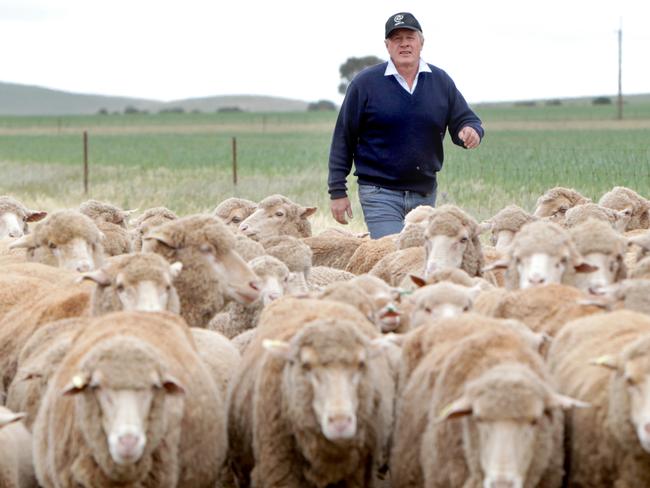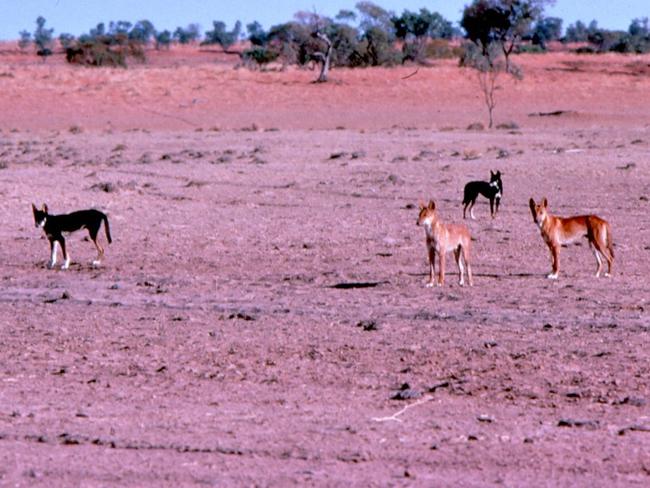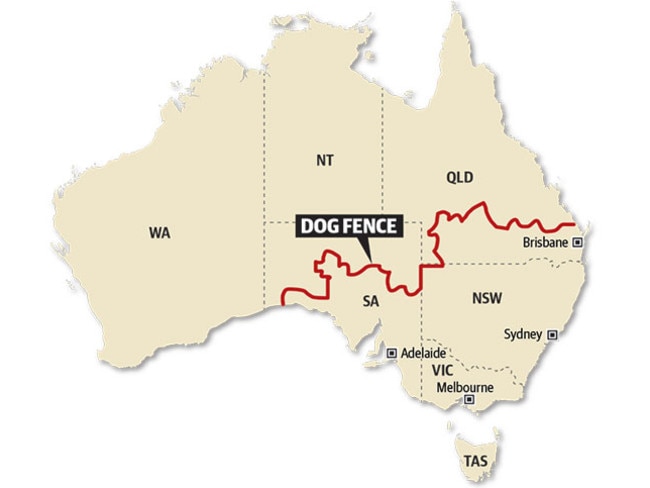Ex-National Wild Dog Stakeholder Consultative Group chief says state Government ignoring calls for more trappers amid rising livestock loss
WILD dogs are rapidly moving south threatening the state’s $1 billion plus sheep industry with one station near Glendambo swamped with more than 30 dogs since Christmas.
SA News
Don't miss out on the headlines from SA News. Followed categories will be added to My News.
WILD dogs are rapidly moving south threatening the state’s $1 billion plus sheep industry with one station near Glendambo swamped with more than 30 dogs caught killing livestock and native animals since Christmas.
Sheep are being attacked and killed as far down as Hawker and at Pernatty Station, some 130kms north of Port Augusta, 11 wild dogs had been trapped in the past eight weeks.
Former National Wild Dog Stakeholder Consultative Group chairman Geoff Power said despite numbers escalating the State Government was ignoring calls for trappers to be employed to control dingoes and wild dogs below the state’s 5614km dog fence.
“It was my view that a couple of years ago we were holding them and I believe we’re in a worse situation now than we were two years ago,” Mr Power, who is also Livestock SA board president, said.

Pernatty Station overseer Joel Venables said “it was sickening” seeing wild dogs spread through his station more than 100kms from the dog fence saying it was an organic property so baiting was not an option “and setting and checking traps has become an almost full time job”.
“We pay a levy for the fence and it isn’t working, there are heaps more,” Mr Venables, also a member of the arid lands Natural Resources Management Group, said.
A single wild dog could kill hundreds of sheep in a year with Mr Power saying 30 to 40 sheep could be killed in one night and they were also attacking calves and numerous native animals.
“We’re putting a viable sheep industry at risk,” he said.
Livestock SA chief executive Andrew Curtis said latest figures showed the sheep industry was worth $1.8 billion to the state including meat and wool processing and the escalation in dog numbers could wipe it out.

“A decade ago the Queensland industry was decimated by wild dogs and it’s only just starting to come back after they have started a program of cluster fencing, lambing rates plummeted from 80 to 90 per cent to 20 per cent,” Mr Curtis said.
And it was not only the risk to sheep, Mr Curtis said dingoes were now threatening native wildlife, they were in the Flinders Ranges district where the State Government had spent million re-establishing the endangered Yellow-Footed Rock Wallaby populations.
“The industry is investing but we believe strongly it should be a partnership and the State Government should be contributing too,” he said.
At Wirraminna Station between Pimba and Glendambo, manager Rob Davidson said dogs numbers “had exploded”, there had been 25 on his property since November 21 last year and a neighbouring property Arcoona had trapped more than 30 since Christmas.
“The problem is out of control,” he said.

Federal Government funds for a trapper — who destroyed 108 wild dogs in 14 months — ran out in April last year and Mr Power, who was is in Queensland at a national wild dog meeting last week, has been lobbying for $300,000 for two new trappers ever since.
Three stations, including Wirraminna and Arcoona have employed the trapper to help tackle rising dog numbers but claimed they urgently needed help.
Mr Power said the state could not rely solely on baiting to control the escalating problem.
“The damage is emotional, they tear the sheep to pieces, and sometimes they maim the sheep and leave them lying there and they have to be put down humanely,” he said.
“They will kill for sport, not just to eat and they might kill 30 to 40 in a night some times.”
Environment Minister Ian Hunter passed inquiries onto the Environment, Water and Natural Resources Department with a spokeswoman saying “while numbers do not seem to have increased significantly, there are indications of increased wild dog activity on some properties”.
“The SA Arid Lands NRM Board is aware of these local impacts and is negotiating with the Commonwealth Government to secure additional funds to support professional dog trapping,” she said.
She said 80 per cent of the 189 properties south of the dog fence baited wild dogs and the SA Arid Lands Biteback program supported landholders in providing traps.
A Port Augusta-based State Wild Dog Coordinator would also start work this month.



